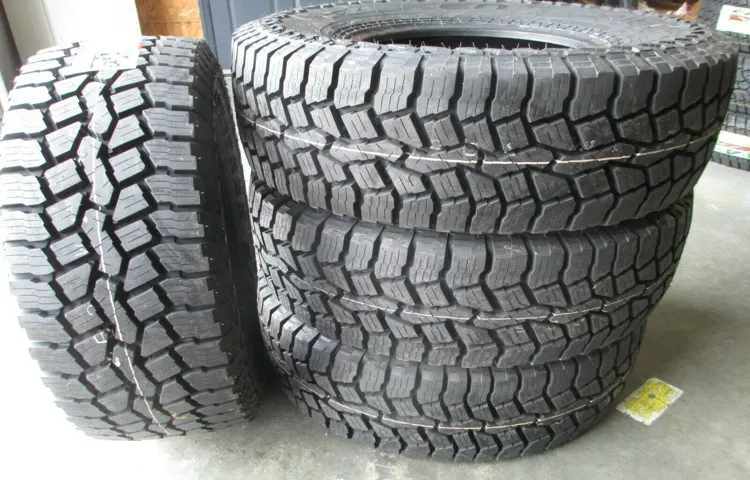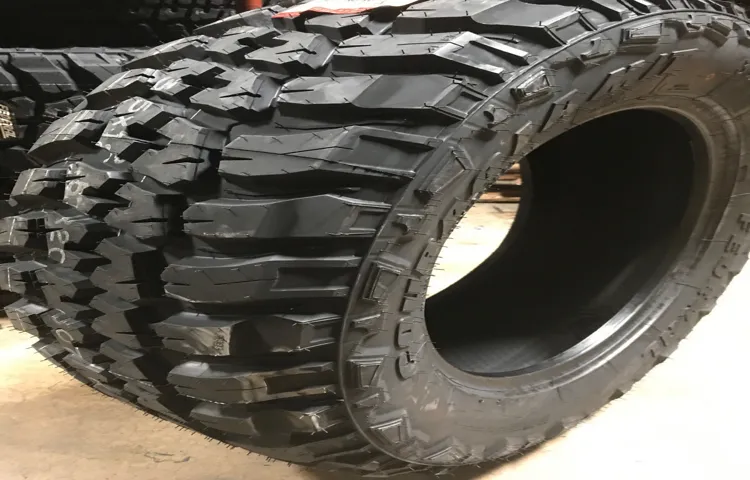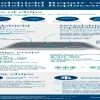Have you ever heard someone say that size doesn’t matter? Well, when it comes to tires, size does matter. Whether you’re a car enthusiast or just an average driver, knowing the size of your tire is important for safe driving and proper maintenance. One tire size that can be confusing for some is the 315 75 r1
Many ask, “How tall is a 315 75 r16 tire?” Well, fret not as we delve into the discussion and provide answers to your questions in this blog post. First and foremost, the 315 75 r16 tire is a popular tire size used for heavy-duty vehicles such as SUVs, pickup trucks, and even some commercial trucks. It can handle rough terrains and high load capacities, which makes it a favorite of many off-road drivers.
The size is indicated by its three main components: width (315), aspect ratio (75), and rim size (16). The width of the tire is measured in millimeters and refers to the tire’s cross-sectional width when fully inflated. The aspect ratio is a percentage that refers to the height of the tire’s sidewall compared to its width.
In this case, the aspect ratio is 75, meaning that the tire’s sidewall height is 75% of its width. Lastly, the rim size (16) indicates the diameter of the wheel the tire is designed to fit. But, how tall is a 315 75 r16 tire? The overall diameter of the tire is approximately 3
6 inches or 879 millimeters. This measurement includes the height of the tire’s sidewall, which is 75% of the width, and the diameter of the rim it’s mounted on. This information is vital when selecting tires for your vehicle, as it helps you to ensure that the tire size is compatible with your vehicle’s suspension system.
In conclusion, knowing the size of your tire is essential for your safety and the longevity of your vehicle. The 315 75 r16 tire size is a popular choice among off-road enthusiasts and heavy-duty vehicle owners. With its impressive load-bearing capacity and ability to handle rough terrains, it’s a tire size worth considering.
Table of Contents
Understanding Tire Sizing
If you’re wondering how tall a 315 75 r16 tire is, it’s important to understand tire sizing. The first number (315) represents the tire’s width in millimeters, while the second number (75) represents the tire’s aspect ratio, or the height of the sidewall as a percentage of the width. In this case, the sidewall height would be 75% of the tire’s width, or 23
25 millimeters (3 inches). The “R” stands for radial construction, which is now the most common type of tire construction.
Finally, the last number (16) represents the diameter of the wheel in inches. So, all together, a 315 75 r16 tire would have a height of approximately 36 inches.
It’s important to note that tire sizing can vary slightly depending on the manufacturer and model of the tire, so it’s always a good idea to double check the specs before making a purchase.
Breaking Down the Numbers
Tire sizing can be confusing for many drivers, but it’s important to understand the numbers on your tires to ensure safety on the road. The first number indicates the width of the tire in millimeters, while the second number represents the aspect ratio, or the height of the tire as a percentage of its width. The letter following the aspect ratio indicates the tire’s construction, with “R” meaning radial.
The next number is the diameter of the wheel in inches. Additionally, some tires have a load index and speed rating, indicating the maximum weight and speed the tire can handle. Understanding tire sizing can help you choose the right tires for your vehicle and keep you driving safely on the road.

What Does ‘315’ Mean?
“315 tire size” When it comes to understanding tire sizing, one of the most common numbers you might come across is “31” This number refers to the tire’s width in millimeters, ensuring that the tire fits onto the specified wheel properly. However, this is not the only number that you need to consider when selecting the right tire for your vehicle.
The three-digit number following “315” relates to the tire’s aspect ratio, which indicates the height of the tire’s sidewall as a percentage of the width. Additionally, you will need to pay attention to the tire’s diameter, which can be found by looking at the numbers following the aspect ratio. By considering these various factors, you can ensure that you select the appropriate tire size for your vehicle and enjoy a smooth and safe driving experience.
What Does ’75’ Mean?
Have you ever wondered what the numbers on your tires mean? The tire sizing system can seem confusing, but it’s actually quite easy to understand once you know what to look for. The number “75” in a tire size, for example, refers to the aspect ratio or the height of the tire’s sidewall. Specifically, it means that the height of the sidewall is 75% of the tire’s width.
So, if your tire size is 225/75R15, this means that the tire is 225 millimeters wide, the sidewall height is 75% of that, or 1675 millimeters, and the tire fits a 15-inch rim. Knowing these numbers is important when replacing your tires, as it ensures that you have the right size and fit for your vehicle.
Always check your owner’s manual or consult a professional if you’re unsure about the correct tire size.
What Does ‘r16’ Mean?
Tire sizing can be a confusing topic, and one of the most perplexing aspects of it is understanding what the alpha-numeric code on the sidewall of your tire means. One of the most common codes you’ll see is “r16,” which refers to the size of the tire. The “r” stands for radial construction, which is now the most common type of tire construction, while the “16” refers to the diameter of the wheel in inches.
When buying tires, it’s important to make sure you select the correct size and style for your vehicle to ensure optimal performance and safety. Don’t hesitate to ask a professional for help if you’re unsure which tires are right for your car.
Calculating the Height of the Tire
If you’re wondering about the height of a 315 75 r16 tire, there are a few factors to consider. The first number, 315, refers to the width of the tire in millimeters. The second number, 75, indicates the aspect ratio, which is the height of the sidewall as a percentage of the width.
So in this case, the sidewall height is 75% of 315mm, or approximately 236mm. Finally, the “r16” refers to the diameter of the wheel in inches, so the overall height of the tire will also depend on the size of the wheel it’s mounted on. All of these factors combined will determine the overall height of the tire, which can be useful information for selecting the appropriate tire for your vehicle or determining whether a certain size will fit properly.
Using a Tire Size Calculator
When it comes to making modifications to your vehicle, one of the things you may consider is changing the tires. However, before making a purchase, you need to consider the size, and that’s where a tire size calculator comes in handy. Calculating the height of the tire is an essential part of finding the right size, and it’s an easy process if you have the right tools.
The height is calculated based on the ratio of the tire’s width to its height, known as the aspect ratio. For example, if you have a tire with a width of 225 millimeters and an aspect ratio of 50, the height of the tire is 115 millimeters (225 x 0.
50). Knowing the height of the tire will help ensure that it is compatible with your vehicle and that it fits without causing any issues. So, next time you go tire shopping, be sure to consult a tire size calculator to get the perfect fit for your ride!
Manually Calculating the Height
Calculating the height of a tire can be done manually with just a few simple steps. First, determine the wheel diameter by measuring the distance across the tire’s center from one edge to the other. Next, measure the sidewall height by finding the distance from the wheel rim to the top of the tire’s tread.
Finally, add the sidewall height to the diameter and multiply that number by two. This will give you the tire’s overall height. It’s important to note that the tire’s pressure can affect its height, so measure when the tire is properly inflated.
By manually calculating the height of your tire, you’ll have a better understanding of your vehicle’s overall dimensions and be better equipped to choose the right tire for your needs.
Conclusion and Final Thoughts
In conclusion, the height of a 315 75 r16 tire can vary depending on factors such as air pressure, tread depth, and the weight of the vehicle it is supporting. However, instead of obsessing over the precise measurement of your tire, perhaps it’s more important to focus on the journey ahead and enjoy the ride – after all, life is about the experiences we have, not the numbers we measure. So, let’s hit the road and see where this tire takes us!”
FAQs
1. What is the overall diameter of a 315/75R16 tire? A: The overall diameter of a 315/75R16 tire is approximately 34 inches. 2. How much weight can a 315/75R16 tire support? A: The weight load rating for a 315/75R16 tire can vary between 2,755 pounds and 3,195 pounds depending on the specific tire model. 3. What is the recommended tire pressure for a 315/75R16 tire? A: The recommended tire pressure for a 315/75R16 tire can vary depending on the vehicle and tire model, but it typically ranges from 35-80 PSI. 4. Can a 315/75R16 tire fit on a stock truck without any modifications? A: It depends on the make and model of the truck. In some cases, a 315/75R16 tire may fit without modifications, but in others, it may require leveling kits, trimming, or other modifications. 5. What is the tread life expectancy of a 315/75R16 tire? A: The tread life expectancy of a 315/75R16 tire can vary depending on the tire model and driving conditions, but it typically ranges from 40,000 to 60,000 miles. 6. Are there any specific tire brands recommended for a 315/75R16 tire? A: There are several reputable tire brands that offer 315/75R16 tires, including Goodyear, Michelin, BF Goodrich, and Cooper. 7. How often should a 315/75R16 tire be rotated? A: It is generally recommended to rotate tires every 5,000-7,000 miles to ensure even wear and prolong the life of the tires.



